
The Church of North India (CNI) is the dominant united Protestant church in northern India. It was established on 29 November 1970 by bringing together most of the Protestant churches working in northern India. It is a province of the worldwide Anglican Communion and a member of the World Methodist Council and the World Communion of Reformed Churches. The merger, which had been in discussions since 1929, came eventually between the Church of India, Pakistan, Burma and Ceylon (Anglican), the Methodist Church, Disciples of Christ, and some congregations from the United Church of Northern India.

Cathedral School is a school established and administered by the Catholic Diocese of Lucknow, India, a religious and charitable society engaged in educational, medical and social work in eight districts of Lucknow. It is registered under the Registration of Societies Act No. XXI of 1860. The school is situated in the centre of Hazratganj. It is an unaided, co-educational, institution. A new system Of CCE is also implemented in the school for a continuous and a comprehensive evaluation of students. EduCom Smart Classes are also launched in primary classes of the school.

The Trinity College Chapel in Kandy, Sri Lanka is one of the more distinctive church buildings in Sri Lanka. It is situated below the Principal's bungalow at Trinity College, Kandy. The chapel is one of the first and finest examples of the application of indigenous architecture in the design of an Anglican church in the country. The building is modelled on traditional Buddhist architecture, reminiscent of those found in Polonnaruwa, an ancient capital of Sri Lanka, in that it is an open building with a lofty hipped roof supported by numerous carved stone pillars.

The Diocese of Ballarat is a diocese of the Anglican Church of Australia, which was created out of the Diocese of Melbourne in 1875. It is situated in the Ballarat region of the state of Victoria, Australia and covers the south-west region of the state. The diocesan cathedral is the Cathedral of Christ the King in Ballarat. Garry Weatherill, formerly the Bishop of Willochra between 2000 and 2011, was installed as the 10th Bishop of Ballarat on 5 November 2011.

St. Mary's Episcopal Cathedral, designed by Memphis architect Bayard Snowden Cairns, located near downtown Memphis, Tennessee, is the cathedral church of the Episcopal Diocese of West Tennessee and the former cathedral of the old statewide Episcopal Diocese of Tennessee.

Loreto Convent, Lucknow is an educational institution founded in 1872 and located in Lucknow, the capital of Uttar Pradesh, India. Loreto Convent is under the management of the Sisters of the Institute of the Blessed Virgin Mary, usually known as the Loreto Sisters. Loreto also has a sister school in Lucknow by the name of St. Agnes' Loreto Day School.
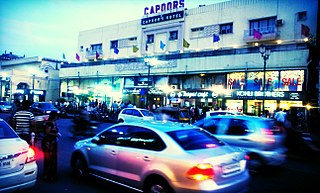
Hazratganj, officially known as Atal Chowk, is the downtown and main shopping hub of Lucknow, the capital and largest city of the Indian state of Uttar Pradesh. In addition to bazaars, it also contains shopping complexes, restaurants, hotels, theatres, cafés and many offices.
The Coimbatore Diocese is one of the 24 dioceses of the Anglican Church of South India (CSI).
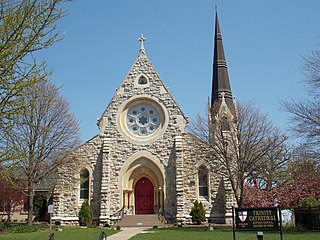
Trinity Episcopal Cathedral, formerly known as Grace Cathedral, is the historic cathedral in the Diocese of Iowa. The cathedral is located on the bluff overlooking Downtown Davenport, Iowa, United States. Completed in 1873, Trinity is one of the oldest cathedrals in the Episcopal Church in the United States. It was individually listed on the National Register of Historic Places in 1974. In 1983 the cathedral was included as a contributing property in the College Square Historic District, which is also listed on the National Register.

St. James' Church in Entally, Kolkata (Calcutta), India, is one of Kolkata's most elegant churches. Built in 1862, the twin spires of the St. James' Church dominates Kolkata's skyline. It is popularly known as Jora Girja, literally twin church, for its twin spires.
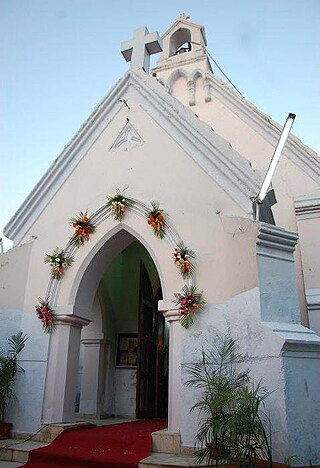
St. Thomas' Church is located in Hisar city of Haryana, India. It is located in central part of Hisar near railway station. It has been declared as a historical monument by Indian National Trust for Art and Cultural Heritage. The Church is dedicated to St. Thomas, one of the 12 main disciples of Jesus Christ.
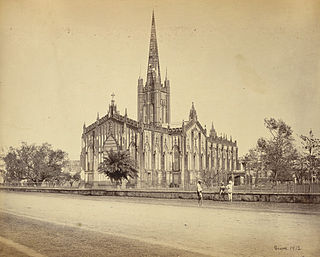
The Church of India, Burma and Ceylon (CIBC) was the autonomous ecclesiastical province of the Anglican Communion, associated with the Church of England, in British India.
The Karnataka Central Diocese is one of the twenty-two dioceses of the Church of South India covering the central part of Karnataka.
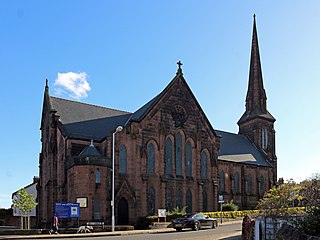
Christ Church is in Christchurch Road, Oxton, Birkenhead, Wirral, Merseyside, England. It is an active Anglican parish church in the deanery of Birkenhead, the archdeaconry of Chester, and the diocese of Chester. The church is recorded in the National Heritage List for England as a designated Grade II listed building. It stands on a sloping site.

Trinity Episcopal Cathedral is an Episcopal cathedral located in Trenton, New Jersey, United States. It is the seat of the Diocese of New Jersey.
St. Paul's Church is located in the corner of Old Poor House Road, and Bowring Hospital Road, next to the Bowring and Lady Curzon Hospital, Bangalore Cantonment, India. St. Paul's has the distinction of being the very first Tamil Anglican Church in the erstwhile Mysore State. St. Paul's celebrated its 175th anniversary in May 2014. Like most old churches of Bangalore, the congregation of St. Paul's is spread all across Bangalore.

St. John's Church is located in St. John's Hill, Cleveland Town, Bangalore Cantonment, India, in between Promenade Road and St. John's Church Road. The church is the fourth oldest Protestant church in the city, with a distinct red edifice and towering steeple, rising out of the leafy surroundings. The church is dedicated to St. John the Evangelist.
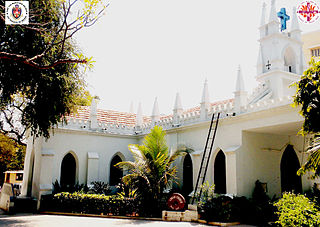
CSI-Christ Church (Hyderabad) is one of the earliest Churches in Hyderabad, Telangana, India. The church is situated in Ramkote locality of the twin cities Hyderabad and Secunderabad and 24 km away from the Rajiv Gandhi International Airport Shamshabad. For Church administrative purposes, it falls under the ecclesiastical jurisdiction of the Diocese of Medak and caters to a diverse Tamil-speaking congregation of about 500 members. The church was consecrated and dedicated in 1869, and is the oldest Tamil Church in Hyderabad.

St. John's Cathedral is the cathedral of the Thoothukudi - Nazareth Diocese of the Church of South India.
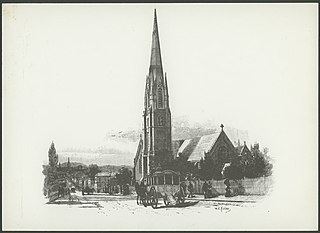
Christ Church, South Yarra is an Anglican church at 683-701 Punt Road, South Yarra in Melbourne, Victoria, Australia. Established in 1856, the congregation form part of the Anglican Diocese of Melbourne. The parish belongs to the Anglo-Catholic or High Church tradition; it was the location of the ordination of the first woman to be a deaconess in Australia in 1884.


















